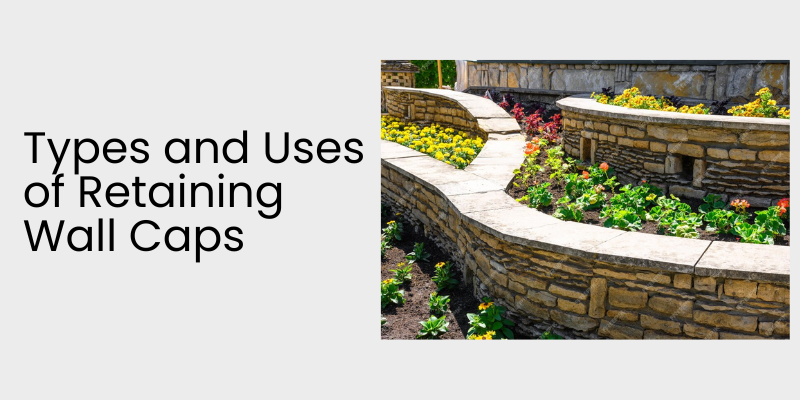
Retaining walls are built to keep soil in place and stop it from washing away. They’re often used in gardens and building work to make flat spaces on hillsides, prevent dirt from moving downhill, and support structures like houses and bridges. The cap of a retaining wall is necessary because it’s the top part that covers the wall, keeping it safe from the weather and making it look complete. This blog will discuss the different types of caps for retaining walls and what they’re for.
Retaining walls play a significant role in many gardens and building projects. They help keep hillsides stable and prevent the ground from eroding, which can harm buildings and nature. These walls can be different shapes and sizes, and the cap you choose depends on what the wall is made of and how you want it to look.
Types of Retaining Wall Caps
Brick Caps
Brick caps are a go-to for many people regarding the top layer of soil-holding walls. They’re crafted from clay or concrete, giving the wall a look that never goes out of style. You can find brick caps in many colours and finishes, so there’s much room for design creativity. Plus, they’re tough and don’t need much care, so they’re a favourite for outdoor spaces.
Concrete Caps
Concrete caps are the most common type of cover for retaining walls. They’re solid concrete and used in many places, such as homes and businesses. These caps are strict and can withstand different weather conditions and wear and tear. They come in various colours and styles to fit into any project.
Natural Stone Caps
Natural stone caps are another option for retaining walls. They’re popular because they look natural and last a long time. These caps are made from rocks like granite or sandstone, giving walls a rugged look. They’re strong against the weather and only need a little maintenance. Like concrete caps, they come in various colours and textures, making them suitable for any project.
Timber Caps
Timber caps are an excellent pick for a different touch on top of retaining walls. They’re wooden, which adds a cosy, earthy vibe to the wall. You can choose from several kinds of wood, like cedar, redwood, or pine, that’s been treated to last longer. They come in various sizes and shapes, offering plenty of design choices. Timber caps need a bit more looking after than other kinds, and you might have to apply a protective sealant to keep them from getting damaged by the weather or rotting.
The Uses of Retaining Wall Caps
Ensuring Safety
Retaining wall caps are a safety barrier between the wall’s edge and people or animals. They prevent accidental falls or trips, especially on taller walls, ensuring safety for everyone around.
Enhancing Appearance
Retaining wall caps add a polished, finished appearance to the walls. They offer a variety of design choices with different colours, textures, and styles. These caps can blend with the surrounding environment or become a standout feature in gardens or yards.
Safeguarding from Weather
Retaining wall caps act as shields against weather conditions like rain, snow, and wind. They stop water from seeping into the wall, which can cause harm over time. These caps also shield the wall’s surface from erosion and damage, prolonging its lifespan.
Final Thoughts
Caps on top of retaining walls are really important. They keep the wall safe from weather, make it look finished, and ensure its safety. You can pick from different types, like concrete, stone, brick, or wood. The choice of the cap depends on what the wall is made of and how you want it to look.
At JCV, we do all sorts of things with retaining walls, like planning, putting them up, and caring for them. Our skilled team can guide you to the right cap for your wall, make sure it’s put on correctly, and make sure it looks great. Contact us for a no-cost quote, and we’ll help you build the ideal retaining wall for your place.














